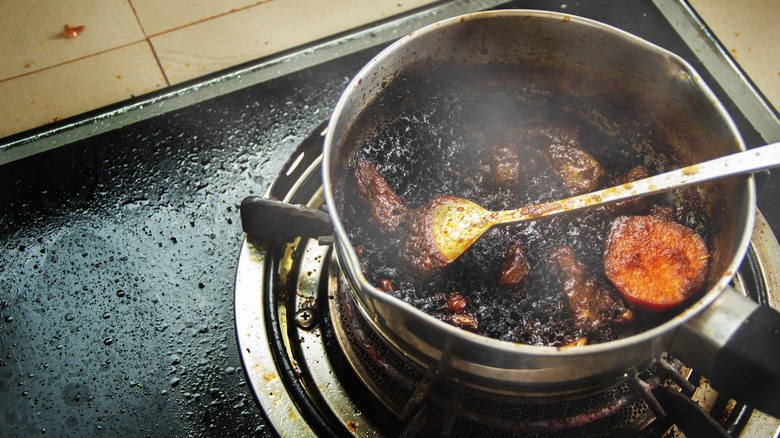Save Borderline Burnt Food With A Simple Cooling Hack
Some have described cooking as a combination of both art and science. That bitter, burnt taste that develops when you forget about that pot on the stove or that sheet in the oven for just a moment too long can sabotage your food preparation, though. Whether it's the slight char on the edges of a perfectly grilled steak or the bitter undertones from an overcooked sauce, the presence of those borderline burnt notes can quickly turn a culinary masterpiece into a culinary misstep.
After putting so much work into your dish, you might wonder; is it possible to salvage borderline burnt food? The answer is yes and all it takes is a simple cooling hack.
The solution is simple; use the freezer. It's the same concept as using an ice bath to quickly cool hard-boiled eggs. The cold temperature essentially stops the cooking process in its tracks, preventing any trace of that unwanted burnt smell or taste.
Can I use the freezer cooling hack on any type of burnt food?
When your cooking adventures teeter on the edge of charred, swiftly transfer the borderline burnt item into the freezer to hit pause on the cooking process. This quick intervention is a straightforward solution to rescue your meal from the brink and ensure a much more palatable outcome. But will it work with any type of nearly burnt food?
This hack will likely work best on things that require toasting — when you want that nice browning but want to avoid any burnt taste (think breadcrumbs, nuts, cookies, or pastries). The key to remember is to first transfer the food onto a new baking sheet before placing it in the freezer.
That step is essential because putting a hot baking sheet directly from the oven into the freezer can lead to a rapid change in temperature, causing thermal shock. The extreme temperature difference can result in the warping or even cracking of the baking sheet. Additionally, the hot baking sheet in the cold freezer can raise the temperature of the freezer and what's inside of it. That could result in food spoilage or bacteria growth.
For those who enjoy a crispier finish
If borderline burnt food actually sounds appealing to you, you're not alone. Slightly charred snacks have become something of a fad recently, with Extra-Toasty Cheez-Its, dark-roasted peanuts, extra dark split pretzels, and even dark-roasted peanut butter gaining popularity. It all has to do with the Maillard reaction according to food experts. This is the uniquely appetizing chemical reaction between amino acids and reducing sugars that gives browned foods their characteristic flavor, color, and aroma.
"Maillard creates a lot of flavor compounds that we like and associate with comfort foods," Pat Polowsky, a food scientist based in Madison, Wisconsin, tells Insider. "It also creates that signature brown color."
To replicate that feel-good Maillard reaction at home, Polowsky advises cooking dry food at high heat for a perfectly singed exterior. Polowsky further recommends adding any sort of toasted element to your dish for extra crunch and saving acidic elements for addition after the reaction occurs. Acidity, like from a squeeze of lemon, can hinder the Maillard reaction.


